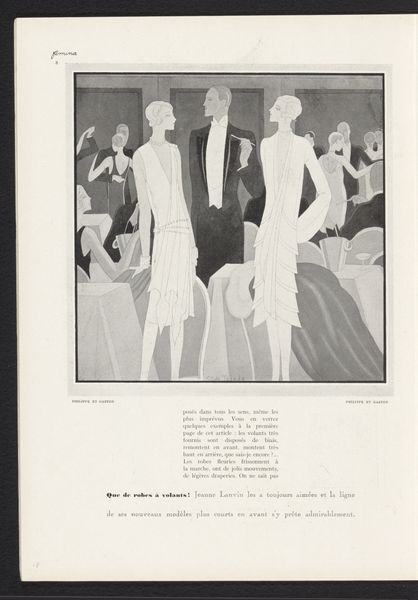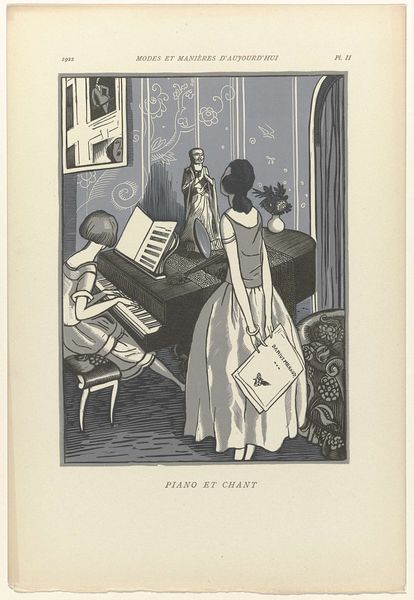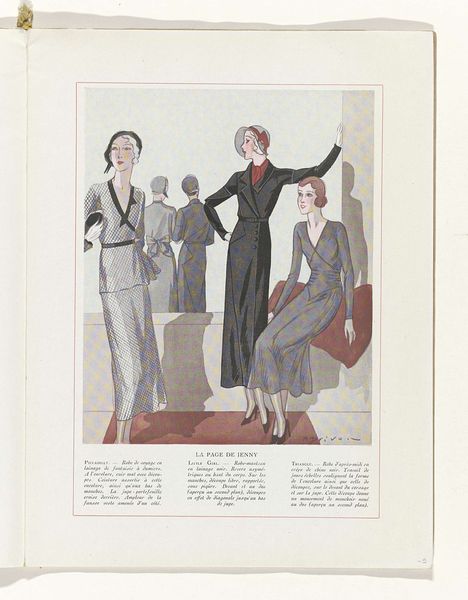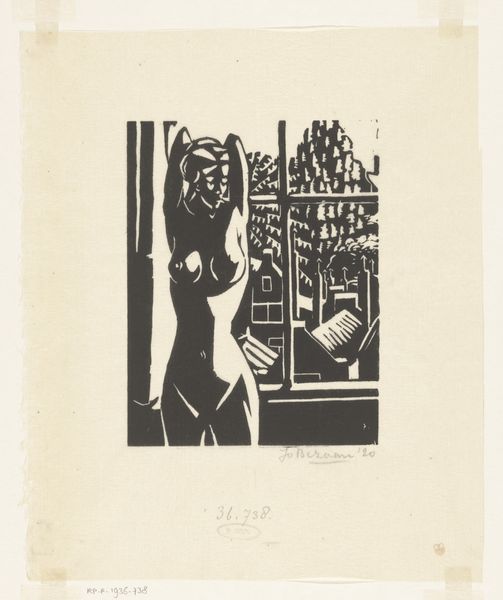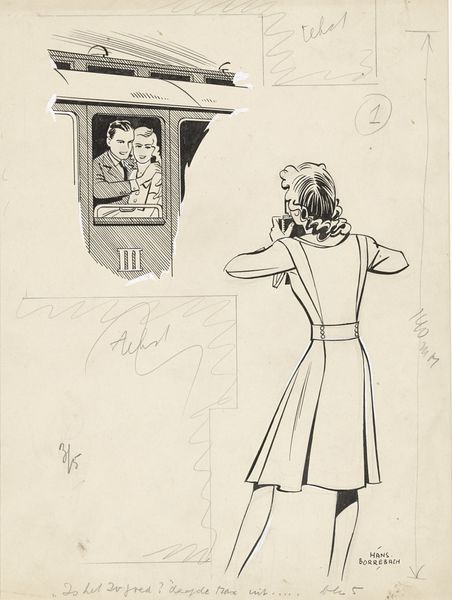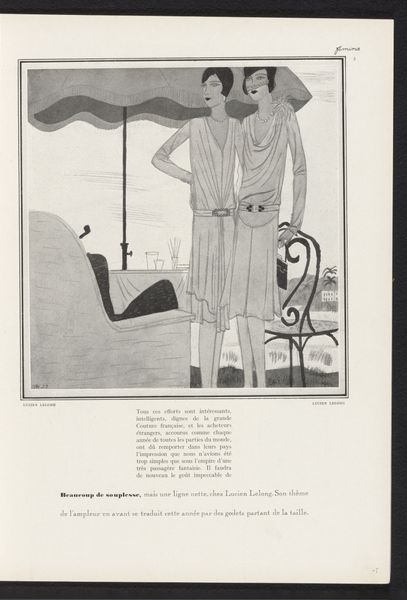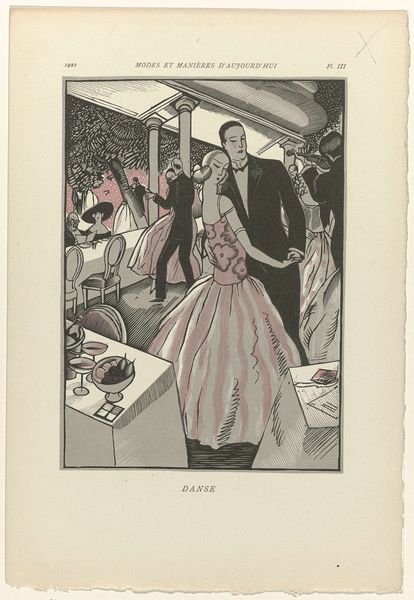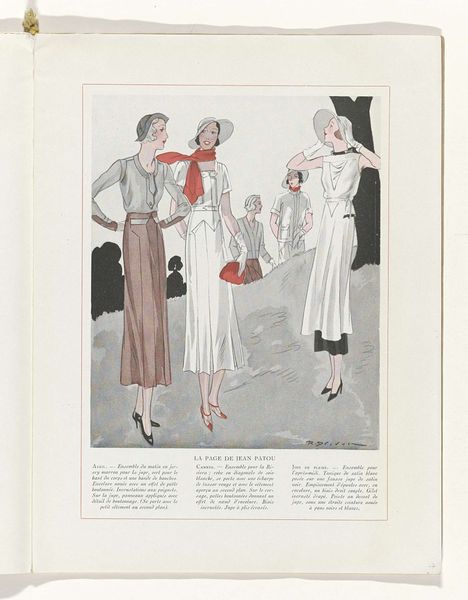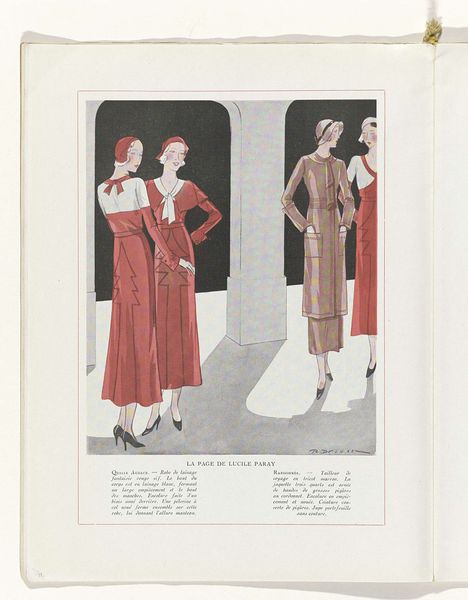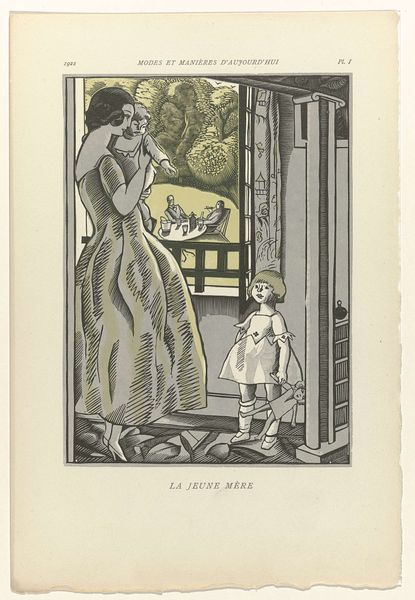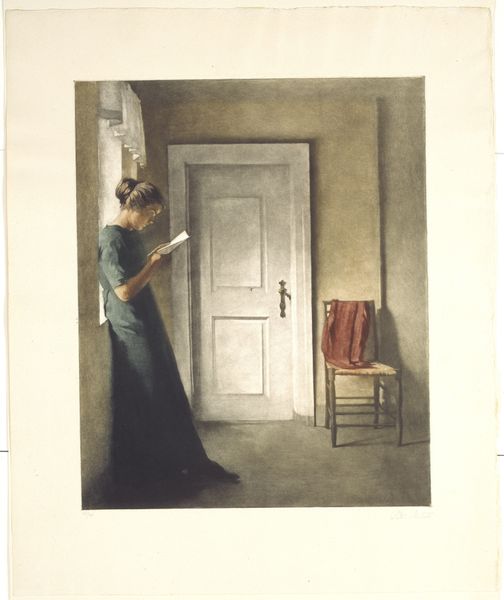
drawing, ink
#
portrait
#
art-deco
#
drawing
#
figuration
#
ink
Dimensions: height 352 mm, width 458 mm
Copyright: Rijks Museum: Open Domain
Curator: Welcome. Today, we're looking at an ink drawing from 1928 entitled “Femina, Mars 1928: 4: Les capes de jour et les capes du soir.” It showcases a fashion advertisement or editorial. Editor: My first thought is: how stark, yet stylish. There’s a striking graphic quality, achieved through strong black and white contrasts, with all of its subtle textures created with delicate line work. It's of its time but also strikingly contemporary. Curator: Indeed. Ink, a readily available material, made reproduction easier for mass distribution in magazines like *Femina*, reaching a wider audience. Note the craftsmanship. How does this type of illustration work, as a medium for broader, industrialized garment manufacture, impact ideas around craft and consumption at the time? Editor: These images reflect ideals about the role of women in society—elegance, leisure, and fashion being central. The women are slender, almost androgynous. There’s an ambiguous and detached feel about them, they almost appear like mannequins on display. Consider how fashion defined and confined women, reflecting shifting, but still limiting gender norms. Curator: And what about the emphasis on line and form, which suggests Art Deco's influence in design, production methods, and industrial arts? How would such drawings allow garments to be marketed and subsequently manufactured? Editor: Precisely. The image normalizes a certain type of aspirational lifestyle that could become increasingly accessible with mass production. This drawing doesn’t only display the clothes, but a social class and a particular aesthetic tied up in privilege and power. Curator: Thinking about material conditions, the paper stock would allow for relatively cheap and rapid dissemination to influence trends and the clothing industry itself. Editor: That’s a critical consideration, too. Analyzing this image is not just looking at the artistry, it’s seeing it as part of larger social and economic patterns affecting women and their roles in society. Curator: Absolutely. When examining the artwork it becomes a valuable window onto the production, distribution, and consumption of both art and fashion. Editor: I think the drawing urges us to consider the gaze—how fashion images affect how we see ourselves and others in society.
Comments
No comments
Be the first to comment and join the conversation on the ultimate creative platform.
